The verdict: The Camry Hybrid offers hybrid fuel economy without compromise, matching the gas model in comfort and cargo room while also offering an efficient, responsive powertrain.
Versus the competition: A big boost in fuel economy for 2018 gives the Camry Hybrid a leg up on much of the competition.
The 2018 Toyota Camry got a much-needed, comprehensive redesign (see the review), and those changes carry over to the Camry Hybrid.
In addition to welcome new styling and better chassis dynamics, the Camry Hybrid also boasts much better fuel economy. Figures vary by trim level: The LE (the trim level I tested) has EPA-estimated mileage of 51/53/52 mpg city/highway/combined. That combined figure is a 30 percent improvement over the 2017's 42/38/40 mpg rating. SE and XLE models get a 21 percent improvement for 2018: 44/47/46 mpg versus 40/37/38. Compare the 2018 Camry Hybrid with last year's model here.
Needless to say, the Hybrid's mileage dwarfs the regular Camry, which at its best is rated 34 mpg combined with the four-cylinder and 26 mpg with the V-6. Of course, the higher mileage comes at a higher price — $3,800 more than the gas version when comparing the base, LE trims.
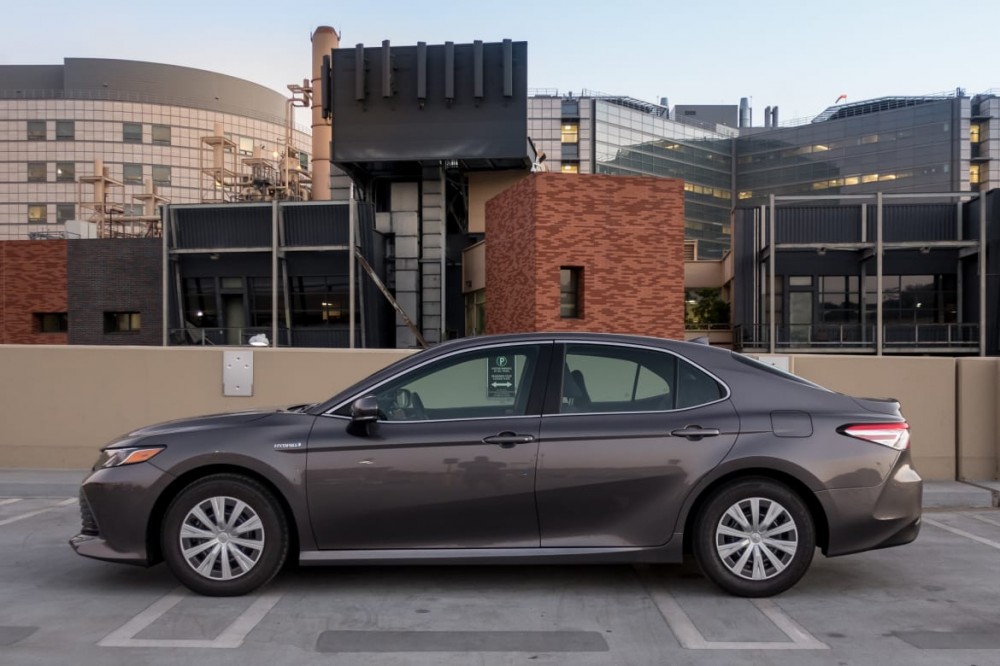
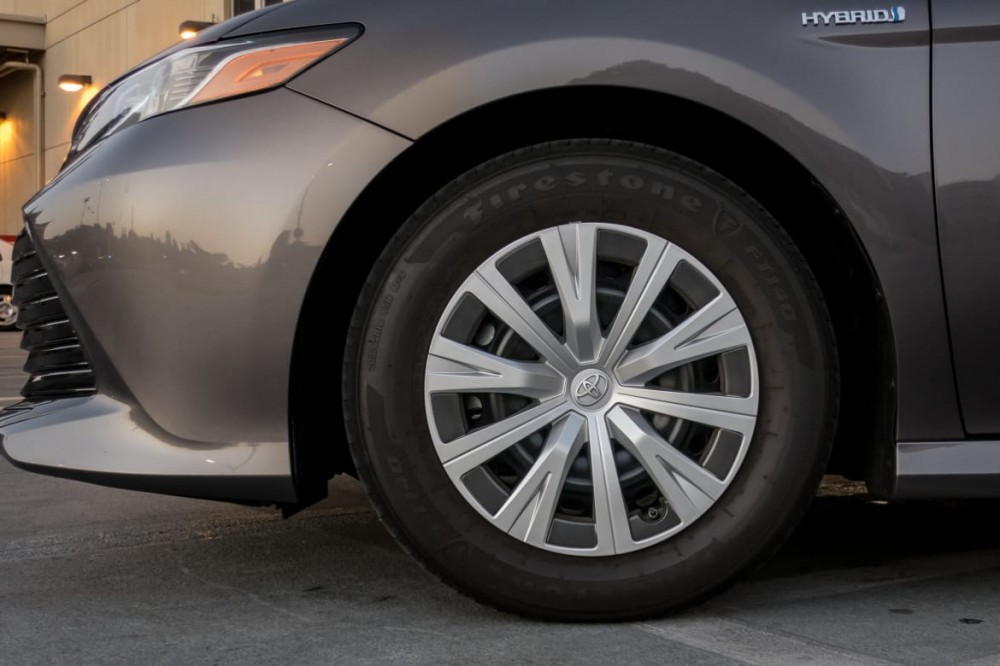
What We Tested
The Camry Hybrid is offered in three trim levels: LE, SE and XLE. Our test vehicle was the lowest trim, an LE, which starts at $28,695 (including destination charge). The SE jumps up to $30,395, and the XLE, which offers the most luxury features, to $33,145.
Our LE test car had a few options added, as well, including blind spot warning, a moonroof, Qi wireless smartphone charging and an auto-dimming rearview mirror, among others, which pushed the final price to $31,600.
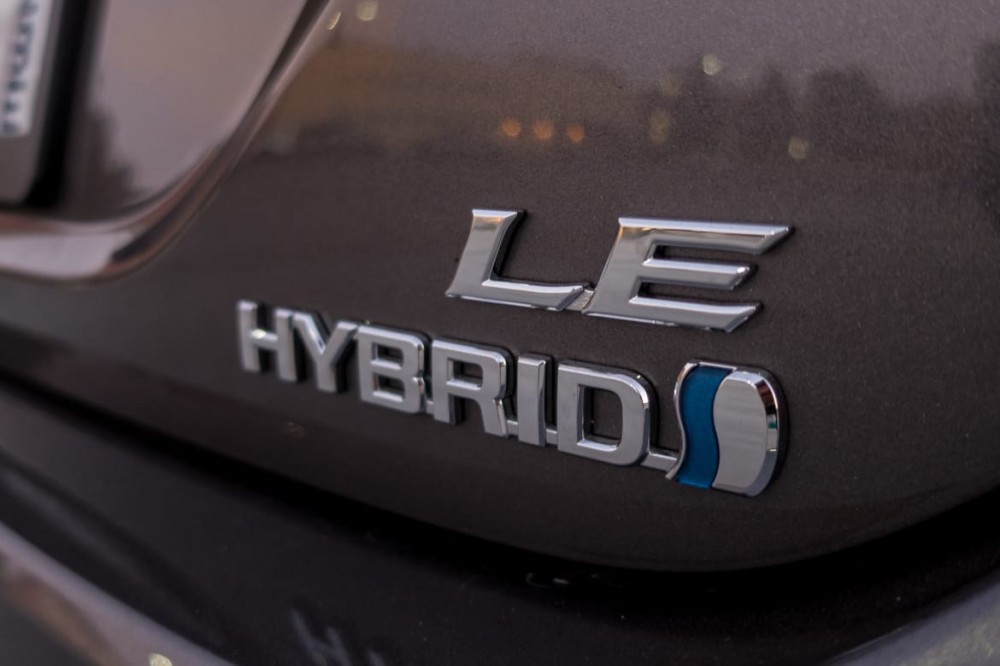
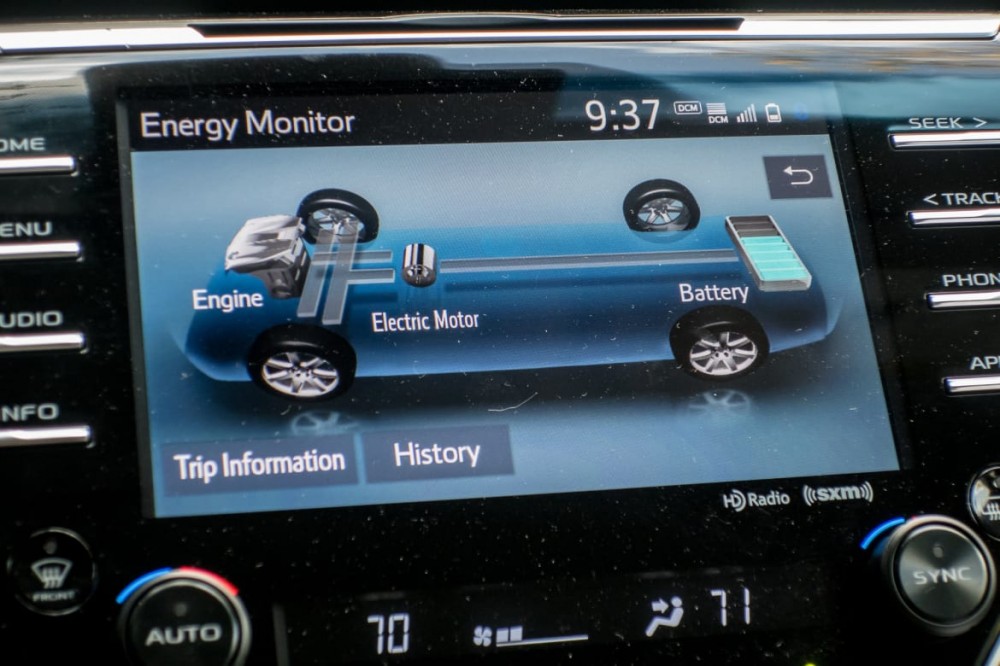
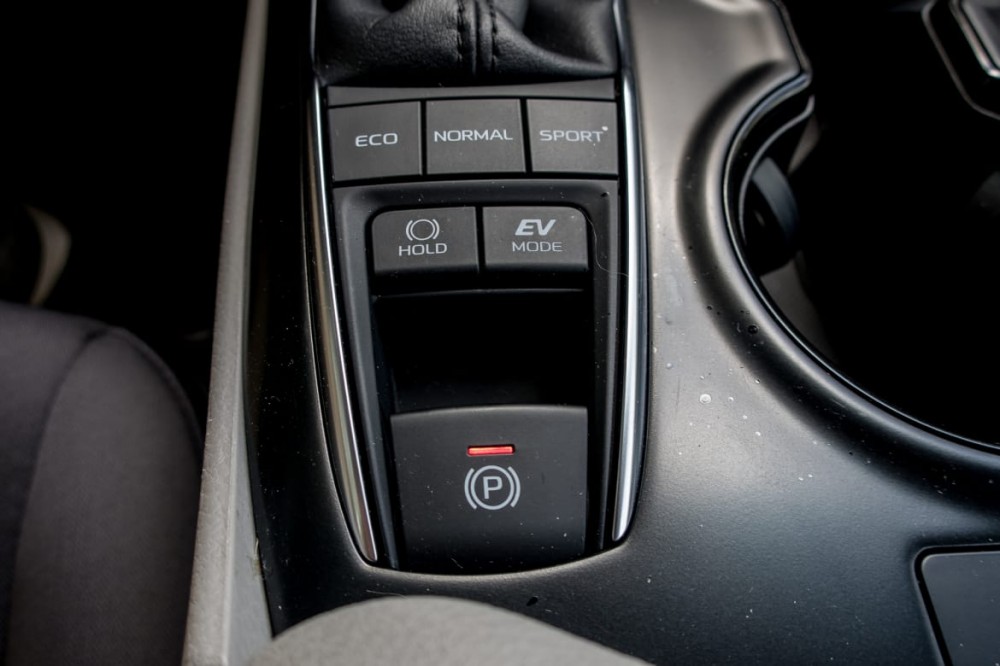
How It Drives
On top of its fuel economy improvements, the hybrid system is more powerful, as well, producing 208 net horsepower versus last year's 200 hp. Power comes from a 2.5-liter four-cylinder engine and two electric motor/generators. LE models get a new lithium-ion battery, while the SE and XLE keep last year's nickel-metal-hydride battery.
The Camry Hybrid drives a cut above the true eco hybrids on the market (like the Toyota Prius and Hyundai Ioniq). Thanks to a more powerful gas engine than those vehicles have, the Camry Hybrid never feels as strained, and it has plenty of power, even from a stop. The 2018 Camry Hybrid gets the same chassis and suspension improvements as the gas model, and it's a much better-driving car than the previous generation. While it isn't really sporty, it rides very well; over the course of an 800-mile road trip I was impressed by its
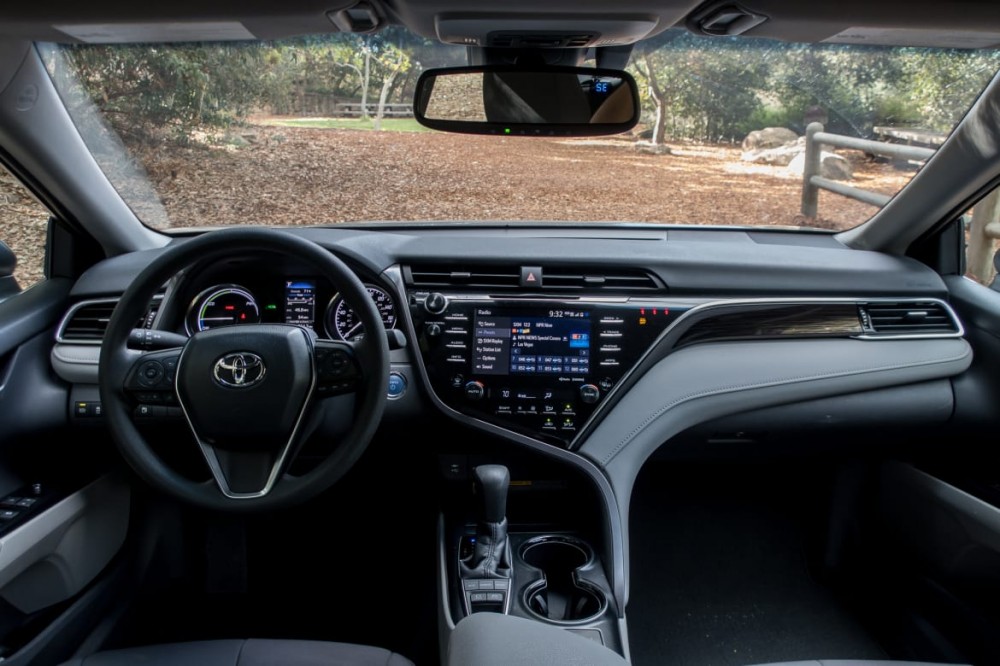
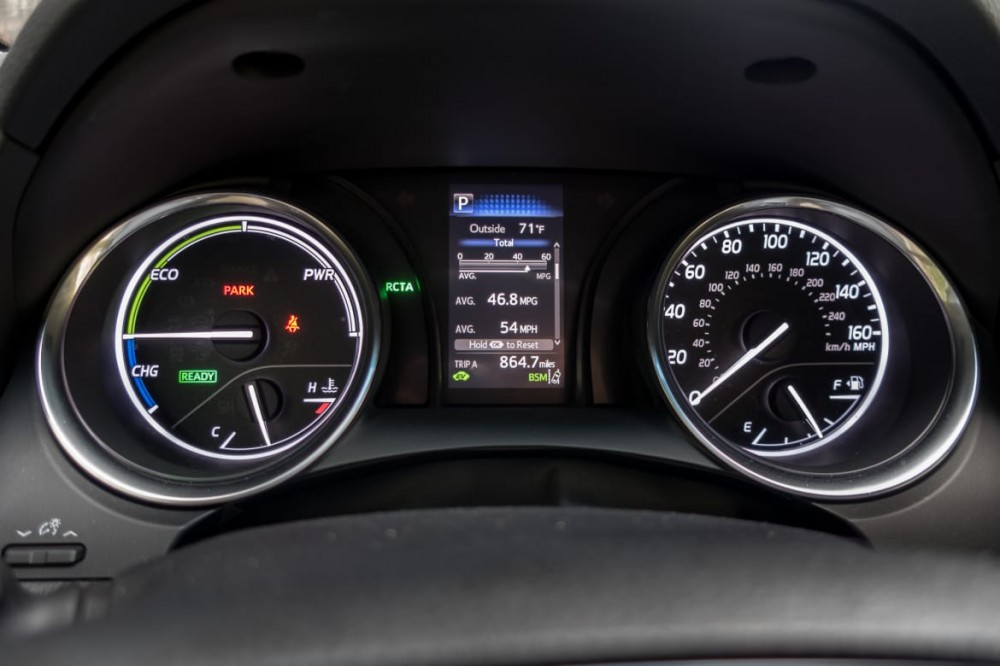
While the car isn’t really sporty, it rides very well; over the course of an 800-mile road trip I was impressed by its quietness and overall comfort.
Interior
The Camry Hybrid LE I drove had cloth seats and a basic interior. I've previously driven a Camry XSE, and that car had a large advantage in terms of materials and a near-luxury feel. The LE is much more basic; there's one section of stitched leather on the dash and the rest is a combination of hard plastics and more budget surfaces. While that's not unexpected in a lower trim level in this class, it's hard to swallow given the premium you pay for the Hybrid.
The Camry Hybrid does at least come with a few extra screens in both the instrument panel and the center dashboard screen, displaying different fuel economy statistics and allowing drivers to monitor how eco-friendly their driving is. The center screen comes with a glossy, black bezel that looks nice but attracts fingerprints and dust. One other drawback to this screen: If the sun catches it at the right angle, it can reflect very brightly into your face while driving. Toyota is not the lone culprit in this; it's happened to me across several makes and models this year, as it seems to be the price of putting surfaces like this on the dashboard. The media system also lacks Android Auto and Apple CarPlay. Toyota is one of the lone holdouts still not offering these technologies in its vehicles, instead supporting its own application suite, Entune. A new version, called Entune 3.0, makes its debut on the Camry, so I don't expect the brand to abandon this approach any time soon.
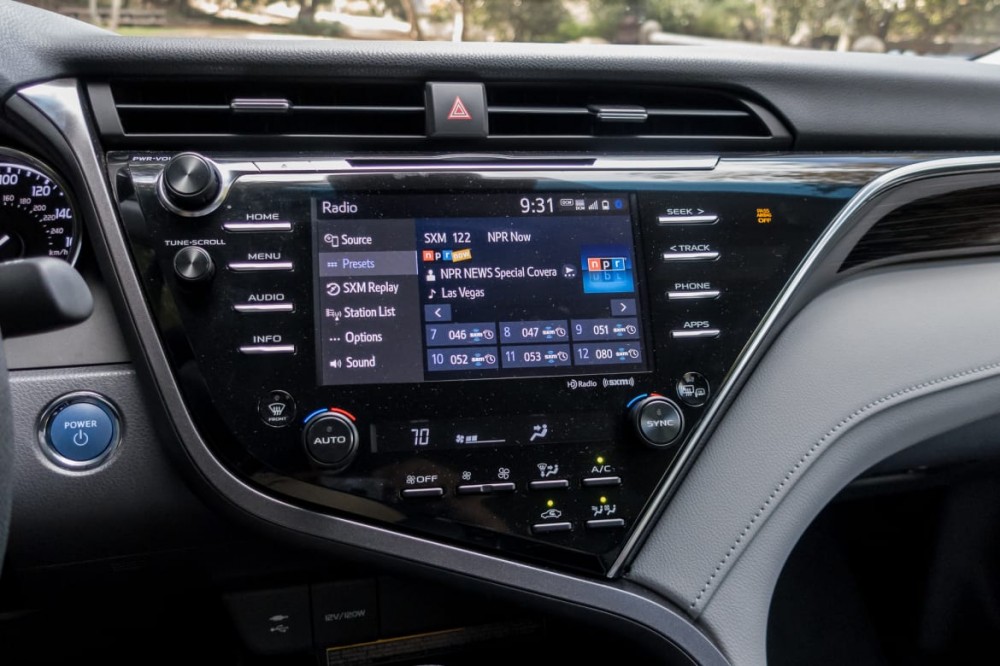
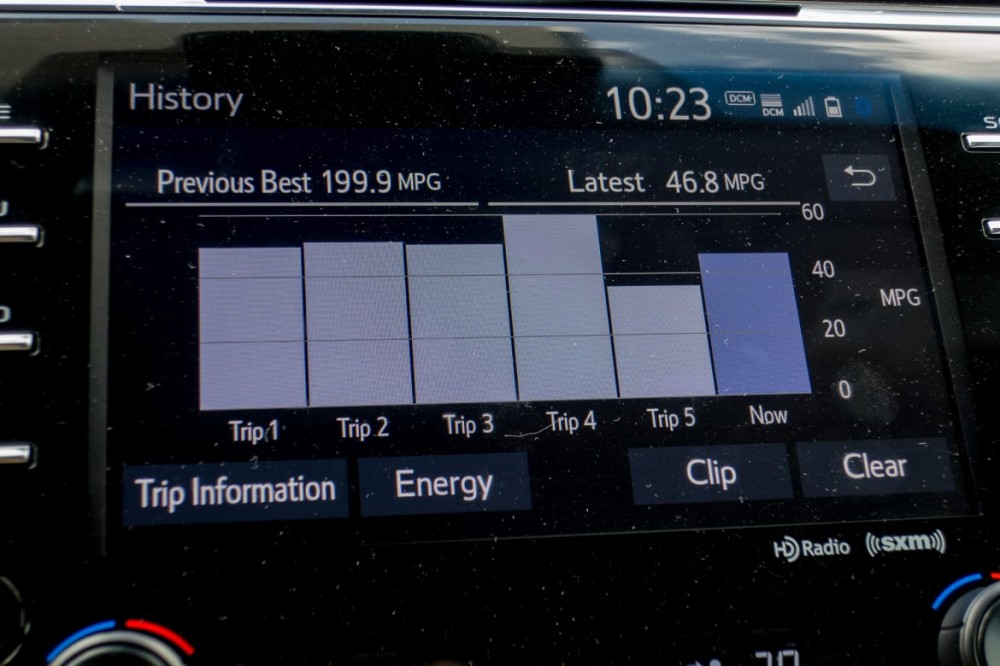
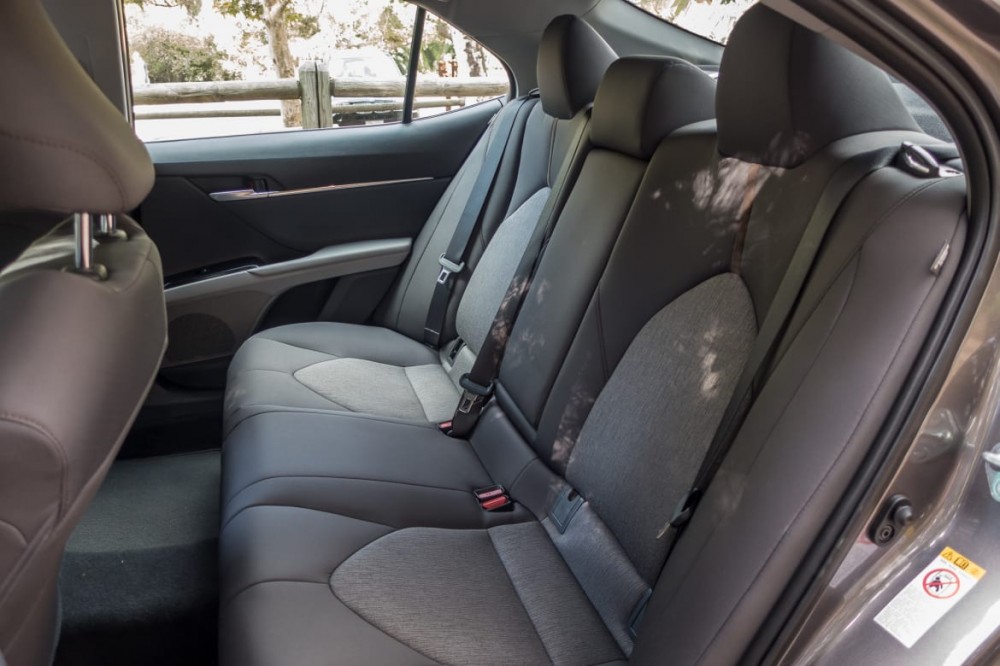
Cargo room has grown for 2018, as the battery has moved from the trunk area to a new home under the rear seats. That gives the Hybrid cargo capacity identical to the gas Camry: 15.1 cubic feet.
Value
Like most Toyotas, the Camry Hybrid offers excellent value on the safety side, with standard adaptive cruise control, lane keep assist, and forward collision warning with automatic emergency braking. The LE's interior, however, isn't as easy to swallow at $30,000-plus as it is closer to the mid-$20,000s.
All around, the Camry Hybrid is a solid mid-size sedan: It drives well, offers a good amount of standard equipment (especially on the safety front) and is much more stylish than before. And when it comes to fuel economy, the LE stands on its own in its class; its only real fuel economy rivals are vehicles like the Prius and Ioniq — dedicated hybrids that don't drive as well.
Competition for the lower-mileage trim levels comes from a wide slate of mid-size hybrids, however, including the Chevrolet Malibu Hybrid, Ford Fusion Hybrid and Honda Accord Hybrid, all of which have estimated combined mileage in the 40s. Compare the Camry Hybrid with those models here. The Camry Hybrid's closest competitor, the 2017 Honda Accord Hybrid (48 mpg combined), is awaiting its own update: The redesigned 2018 Honda Accord Hybrid will debut early next year, likely with improved mileage of its own.


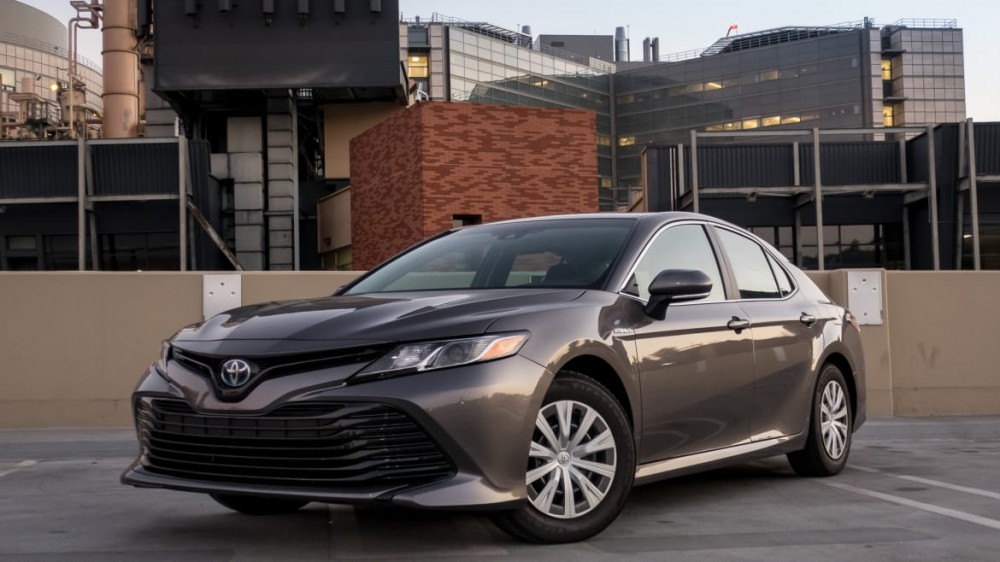
Leave a Reply